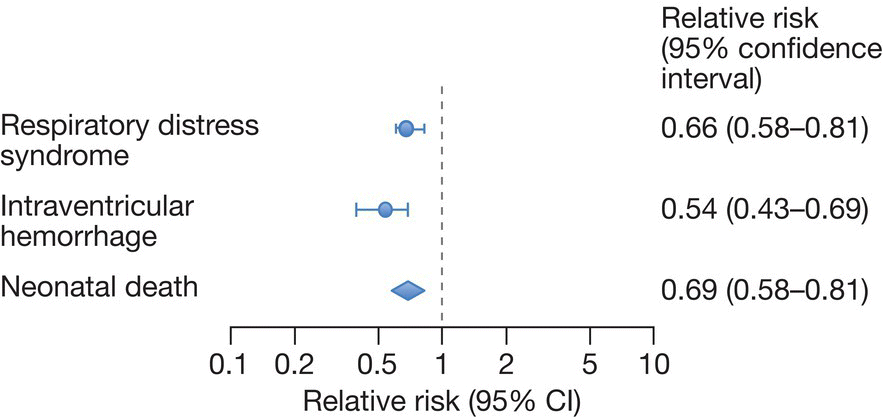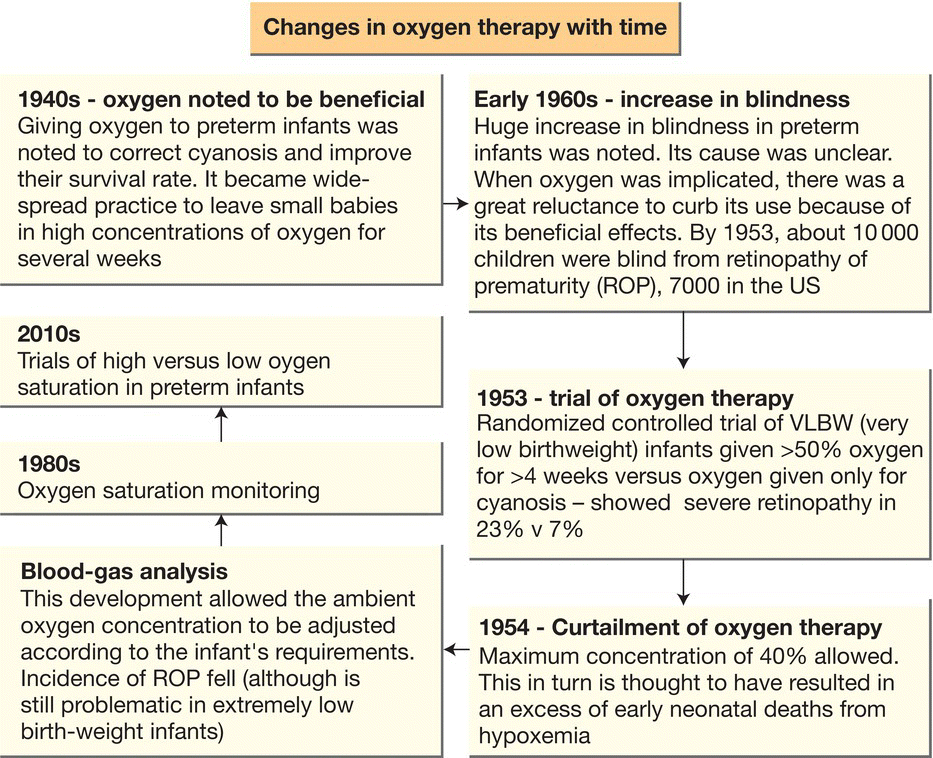67
Evidence-based medicine
What is evidence-based medicine (EBM)?
It is the conscientious, explicit and judicious use of current best evidence in making decisions about the care of individual patients.
Steps in the practice of evidence-based medicine
See Fig. 67.1.

Fig. 67.1 Steps in the practice of EBM (evidence-based medicine). CI = confidence interval.
(Data from Jacobs S.E. et al. Cooling for newborns with hypoxic ischaemic encephalopathy. Cochrane Database Syst Rev 2013; (1): CD003311.)
Examples of evidence-based medicine in neonatology
The following are some examples from neonatal medicine of therapy proven to be beneficial or harmful. However, for most decisions in clinical practice, guidance from evidence-based medicine is not available, is inconclusive or may be conflicting. Clinicians have to base their decisions on the best available information, clinical experience and the evaluation of potential benefits and risks for the individual patient.
Beneficial therapies
Examples of therapies shown to be beneficial are:
- Maternal prophylactic corticosteroids for preterm birth (Fig. 67.2).
- Maternal anti-D (Rho) immunoglobulin – to rhesus negative mothers to prevent rhesus disease of the newborn.
- Surfactant therapy in preterm infants.
- Moderate hypothermia for moderate or severe HIE (hypoxic–ischemic encephalopathy) (Fig. 67.1).

Fig. 67.2 Meta-analysis of prophylactic corticosteroids for preterm birth showing reduction in respiratory distress syndrome, intraventricular hemorrhage and neonatal death.
(Data from Roberts D., Dalziel S.R. Antenatal corticosteroids for accelerating fetal lung maturation for women at risk of preterm birth. Cochrane Database Syst Rev 2006, (3). CD004454.)

Fig. 67.3 Outcomes in preterm infants with oxygen saturation in lower and higher target ranges.
(Data from The BOOST II United Kingdom, Australia and New Zealand collaborative groups. Oxygen saturation and outcomes in preterm infants. N Engl J Med 2013; 368: 2094–2104.)
Harmful therapies
Examples of therapies shown to be harmful are:
- Uncontrolled oxygen therapy causing blindness in preterm infants. This demonstrates the dangers of the introduction of a new therapy, oxygen, followed by restriction in its use, without evidence from randomized controlled trials (Fig. 67.4).
- Antibiotic side-effects:
- – chloramphenicol (unmonitored) – gray baby syndrome (circulatory collapse)
- – sulfonamides – displacement of bilirubin, resulting in kernicterus
- – tetracycline – yellow staining of teeth and bones.
- Early prophylactic corticosteroids in preterm infants to reduce severity of respiratory distress syndrome and BPD (bronchopulmonary dysplasia) – gastrointestinal perforation, growth failure, hypertension and probable neurodevelopmental deficit.

Fig. 67.4 Changes in oxygen therapy with time.